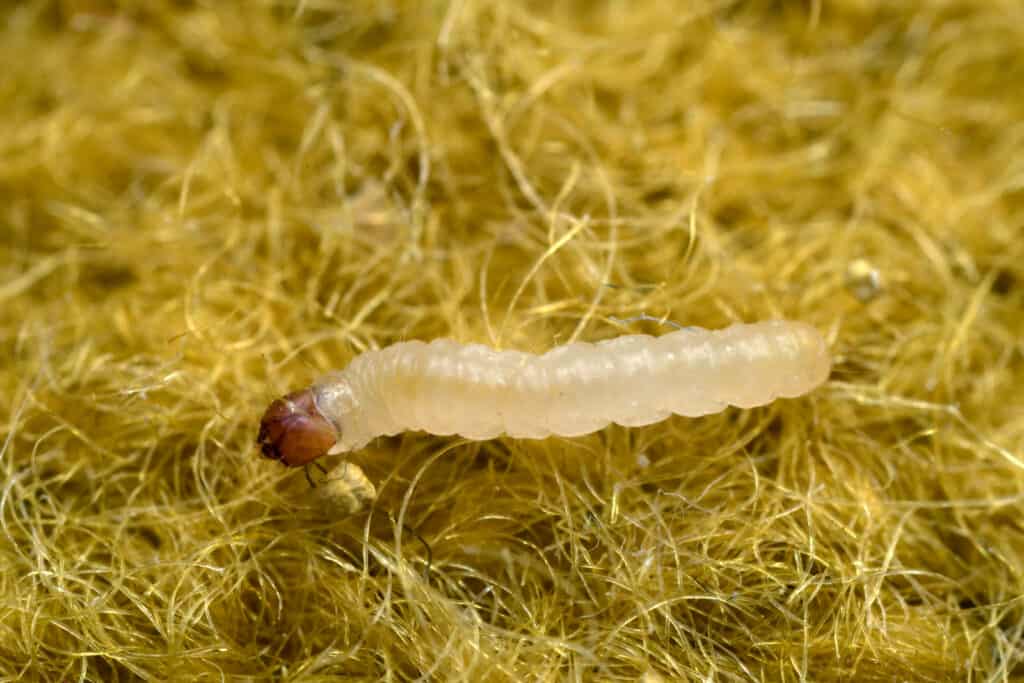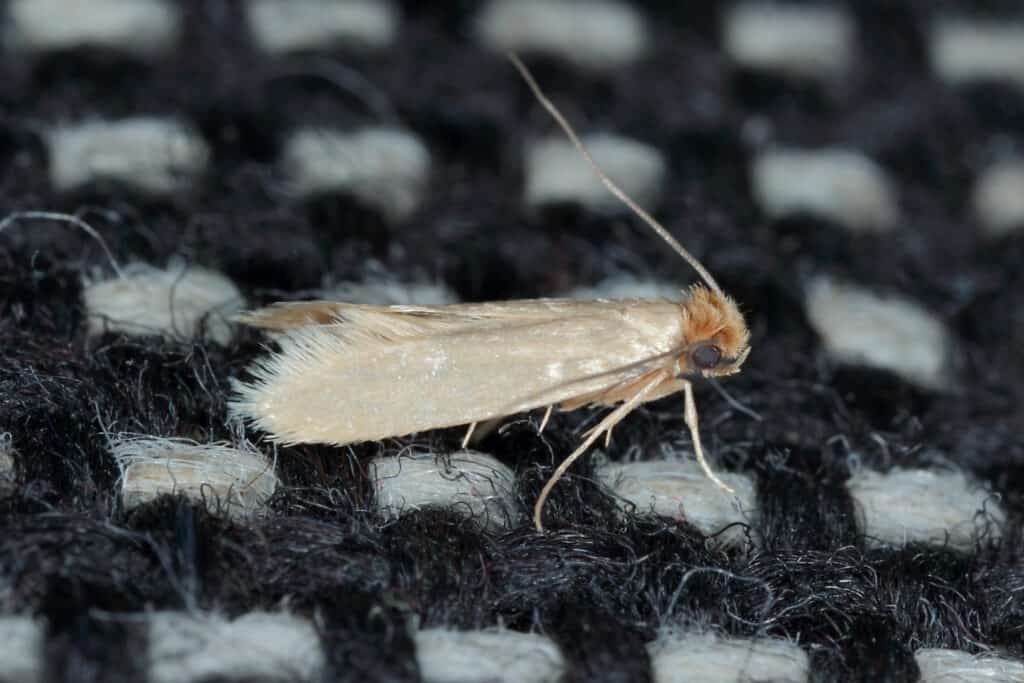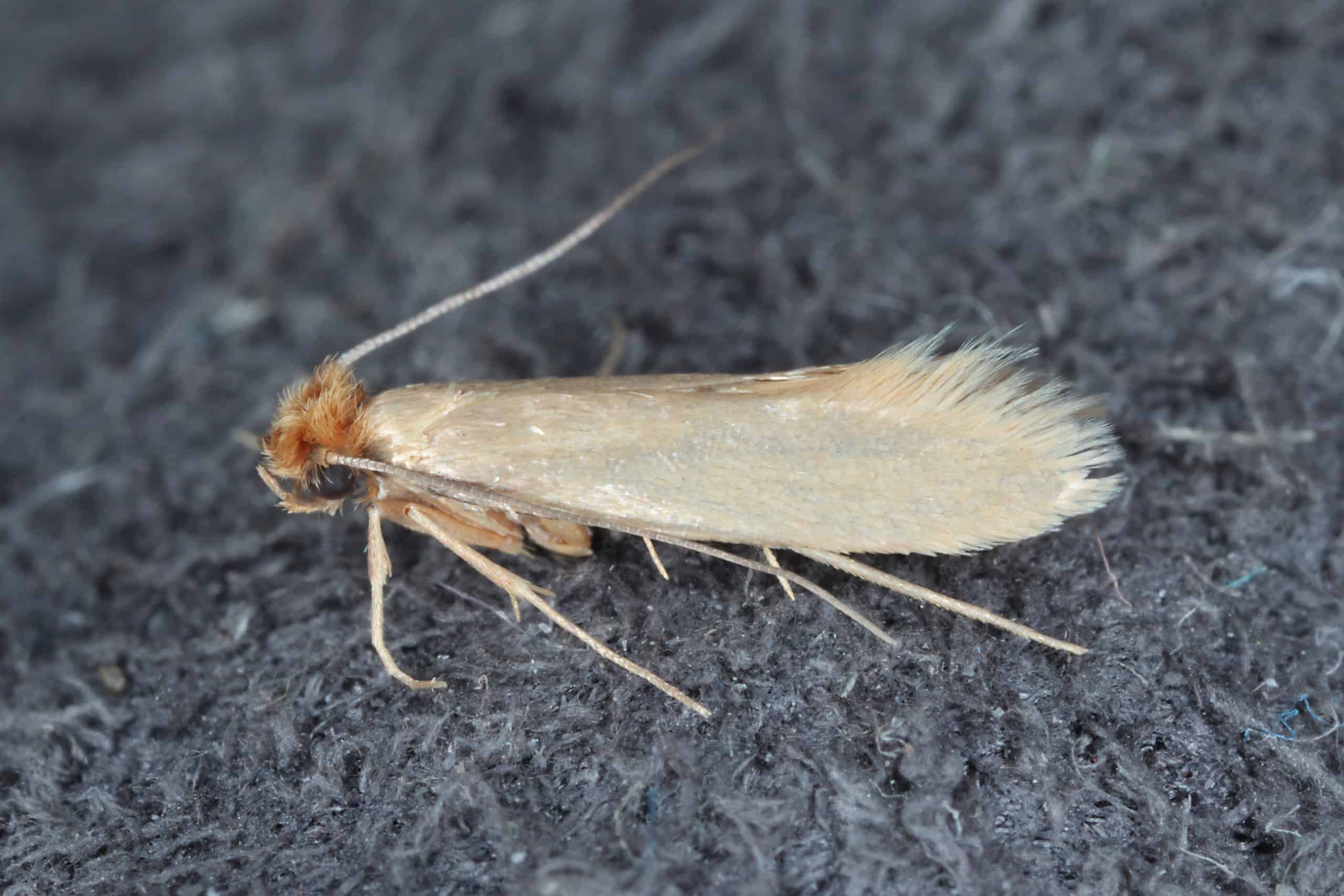We often think of moths as relatives of the humble butterfly. But what you may not know is that these little guys can actually be rather destructive — to your clothes.
While the myth that moths eat your clothes is not entirely accurate, there is some truth to the myth. Here are ways you can prevent your precious clothing from becoming bug food.
Do Moths Really Eat Your Clothes?

Clothes moth larvae feed on clothing fibers. These larvae are what actually eat through your fabric to grow and develop into moths, not the moths themselves.
©D Kucharski/Shutterstock.com
Yes and no. There are only about two species of so-called “clothing moths” in the world, the most common of which is a species known as Tineola bisselliella. These small moths only grow to be about 6–7 mm (0.24–0.28 in) in length. Their most distinguishing trait is their yellow-brown color and a red-orange tuft of hair on the top of their head.
Their life cycle typically starts with the females laying eggs in large clusters ranging from 30 and 200, which can appear as small white dots sitting on different surfaces of glue. As one could guess, the reason these are called clothing moths is because, once they hatch, they immediately begin to feed — and their favorite food may just be some of your favorite clothes.
These near-microscopic white, caterpillar larvae dine primarily on substances and fibers like wool, cashmere, silk, and fur, which are most commonly found in some of your favorite coats, shirts, or jackets.
So it is actually the larvae that do the most damage to your clothes in order to grow into adult moths over the course of a few months, which is good for them, but not so much for your wallet.
How Do Moths Even End Up on Clothes?

Clothes moths are common household pests and often grow from larvae already on your clothes.
©DeZet/Shutterstock.com
There are a variety of ways moth eggs can end up on your clothes. These species typically prefer dark, warm places over spaces with a lot of light, which may be the reason behind their overall darker color. This is why they mostly spring up during warmer times of the year to mate and lay eggs.
This can make it rather difficult to spot in clothing stores, though most of the time, they can simply enter your home without you noticing and choose to take refuge in your closet or wardrobe. The dark, closed-off atmosphere of most closets makes them the perfect nesting spot for these insects.
How to Get Rid of Them

Cleaning your closet and clothes and keeping them clean is the best way to prevent clothes moths.
©Thomas Kleidysz/Shutterstock.com
Although time-consuming, getting into the habit of cleaning the parts of your home that you don’t usually clean can often be an easy way to expose the moths before they become a problem. Cleaning your closet or any other isolated, hard-to-reach parts of your home thoroughly may be a hassle. Despite that, it is the easiest way to ensure moths don’t have a comfy place to stay.
You must clean any clothing that you purchase from second-hand stores or borrow from friends or family. This may be common practice, but it can be the most effective means of keeping your clothes moth-egg-free.
Using mothballs or pheromone traps is also effective. Although the former can produce a rather unpleasant smell, they are highly effective in killing off and keeping moths away. Because of their pungent scent, mothballs should only really be used if you are certain you have a moth problem.
Pheromone traps are not nearly as effective unless the moths are ready to breed. They essentially trick females into thinking males are also female, preventing them from breeding.
If all else fails and moths start to become a serious issue, calling a professional to eliminate them squarely from your household is the most straightforward method. This should only be a last resort if you cannot control the problem.
Thank you for reading! Have some feedback for us? Contact the AZ Animals editorial team.








